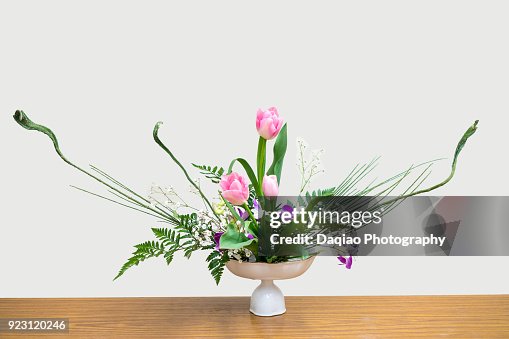Sophomore Maki Stephens’ aspirations stretch far beyond her years. While her peers are focused on day-to-day high school activities, Maki has a unique hobby: Ikebana. However, this isn’t just a casual thing for this sophomore, as she one day wishes to be a Grandmaster in the art, just like her grandmother.
Originating in the 6th century, Ikebana is a traditional Japanese art form that involves the precise arrangement of flowers and greenery to evoke specific emotions. While the art began with religious origins, it has morphed into its very own distinctive philosophy.

Inspired by her grandmother and her love of art, Maki has decided that she is just as passionate about this art form as those who came before her. Her grandmother’s dedication to the art is crystal clear, as she frequently attends meetings in Japan and across the United States. While there, she uses her years of experience to express her ideas and provide expertise to those who also partake in the heritage. Her mother is also committed to the art of Ikebana, but she is not yet a Grandmaster. It will take her years to reach that level of expertise, just as it did her grandmother.
Many different types of schools specialize in certain things such as Ikebana. Currently, Maki is in the Ohara-ryu School of Ikebana. This is described as, “the modern art version of Ikebana, as it has more freedom with material,” according to this future grandmaster. The creative freedom that comes with this modernized version of the tradition gives Maki the privilege to express herself in many ways.
The journey to obtain this title is not an easy one. Maki shared, “It’s mainly just time. You have to be doing Ikebana for, like, 40 years basically, and there’s also tests and stuff that you have to pass in order to become a higher rank.” According to her, there is a lot of math involved, that you wouldn’t think about until you’re in the act of creating an arrangement. You must perfect the angles of whatever plants you wish to include, so long as they fit the guidelines. Then, if your teacher determines it is good enough, they will stamp your card. The stamps on this card will end up determining your rank.
The practice of Ikebana also allows Maki to connect more with her Japanese culture. Each arrangement that she creates is a way for her to pay tribute to those who have come before her and the traditions that have been passed from generation to generation.
Despite the time it will take to reach her goal, Maki has no plans to give up. The years it will take will be filled with opportunities to continue learning about her culture and art. The legacy that has been set by her grandmother will undoubtedly continue with the excellence of Maki Stephens.



















yo mama • Dec 13, 2024 at 8:55 am
Maki is so cool. wow. this is a great article. I’ll kiss them on the mouth if i could.